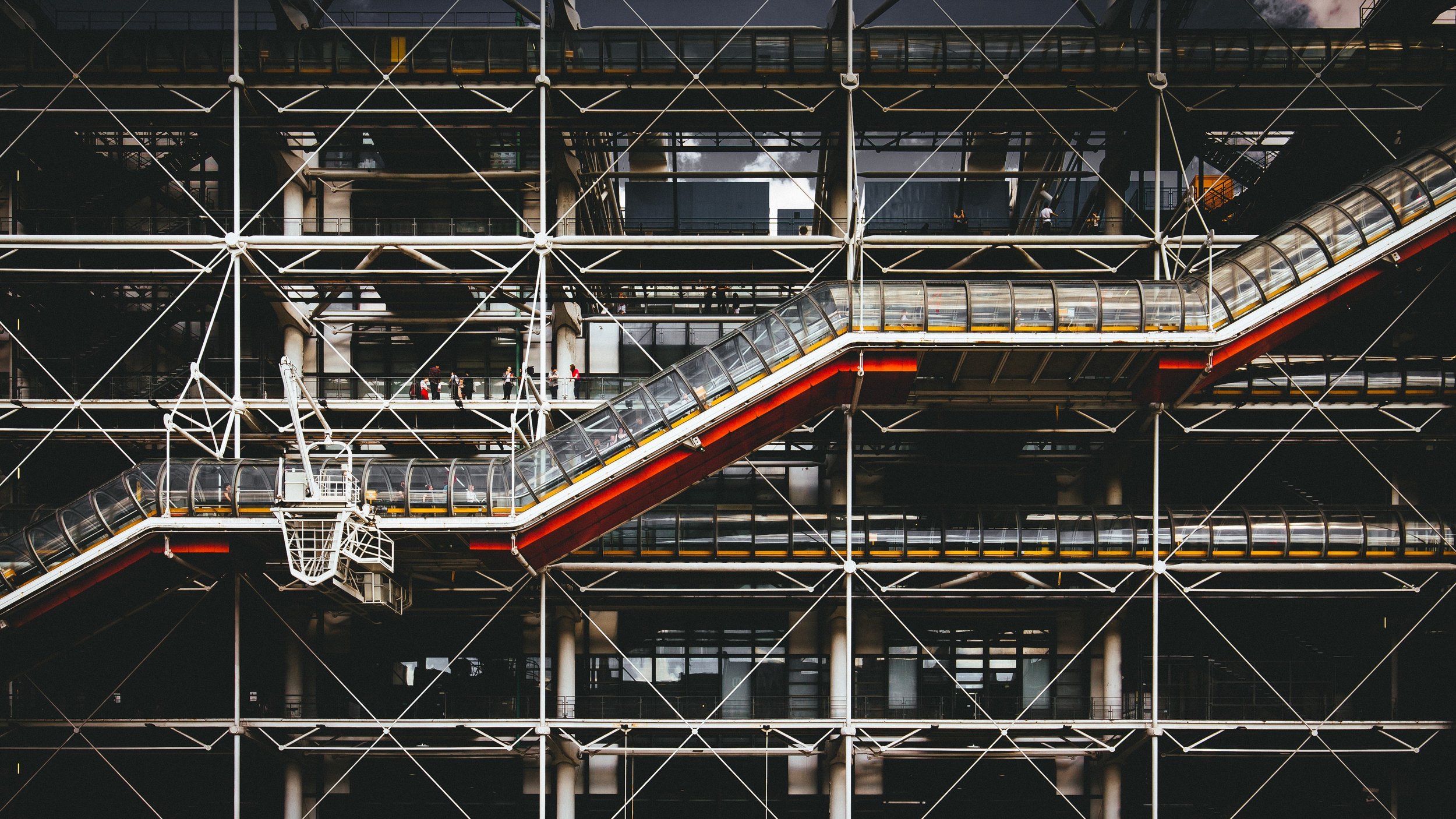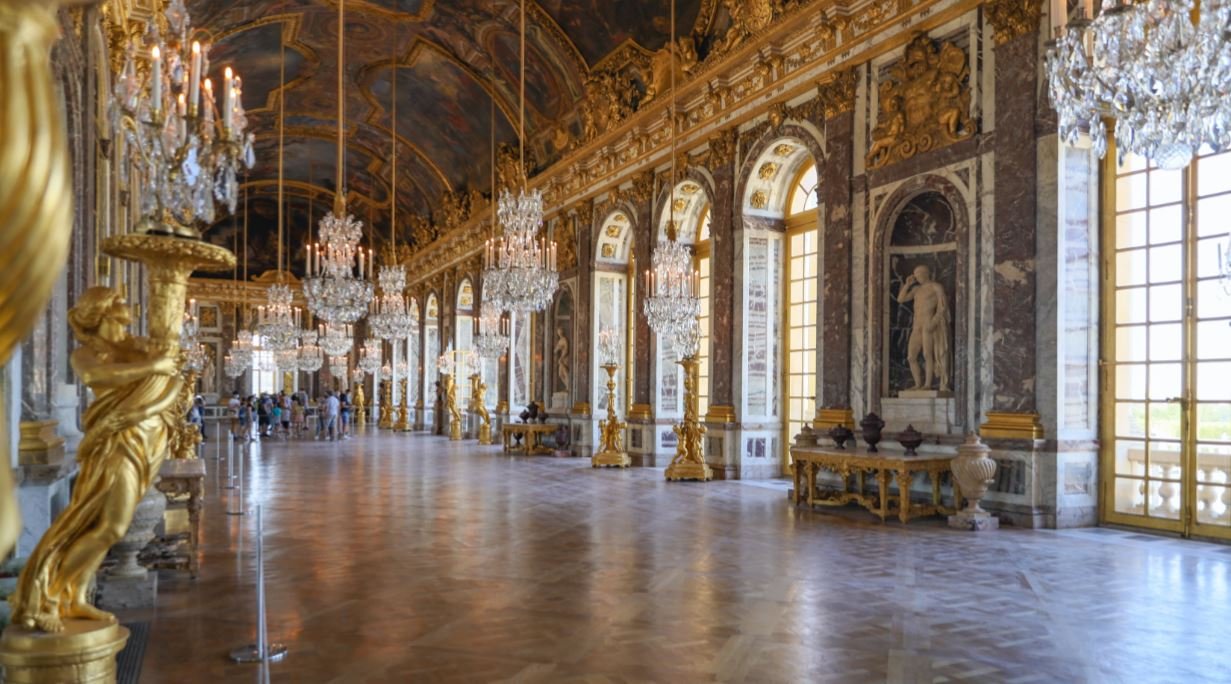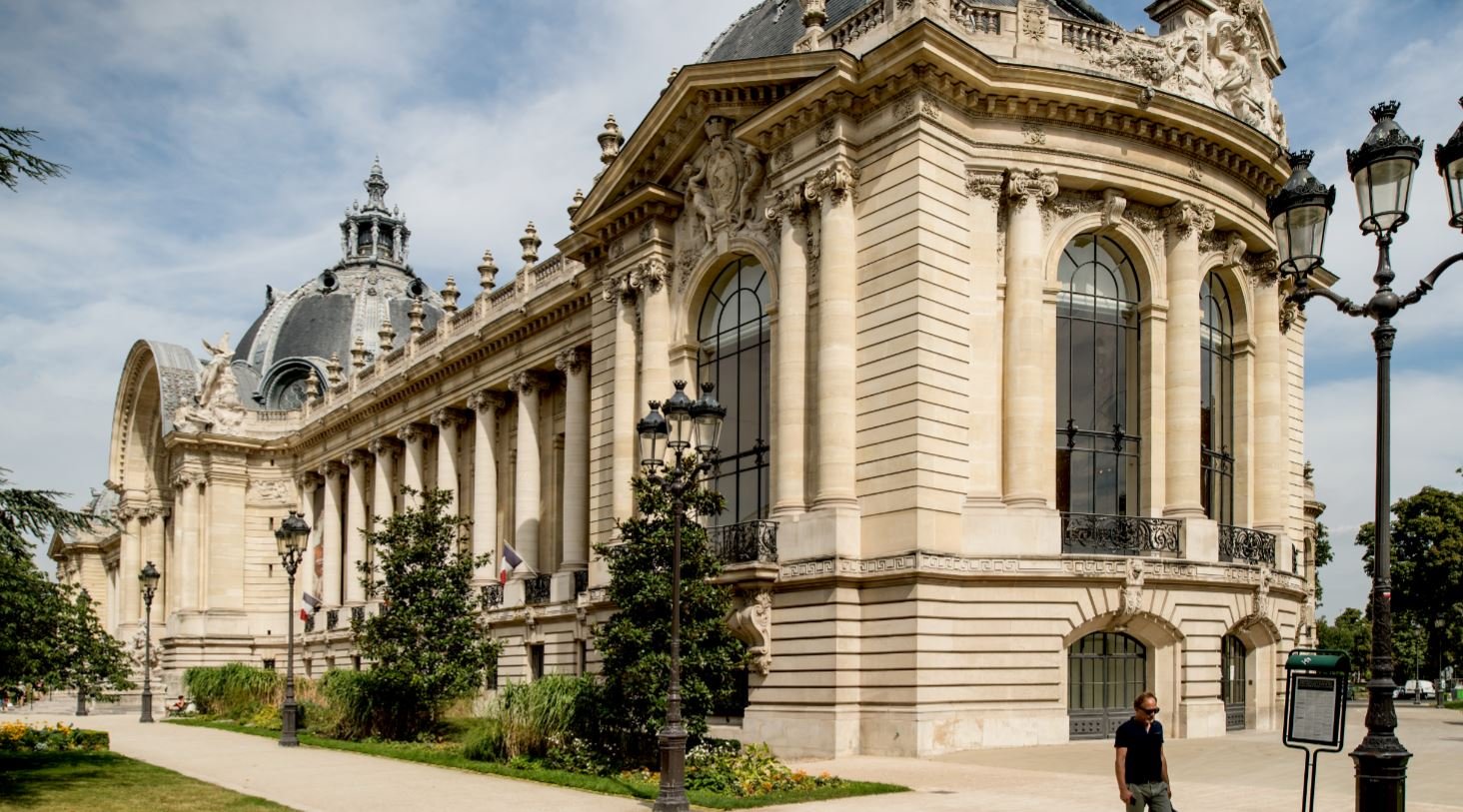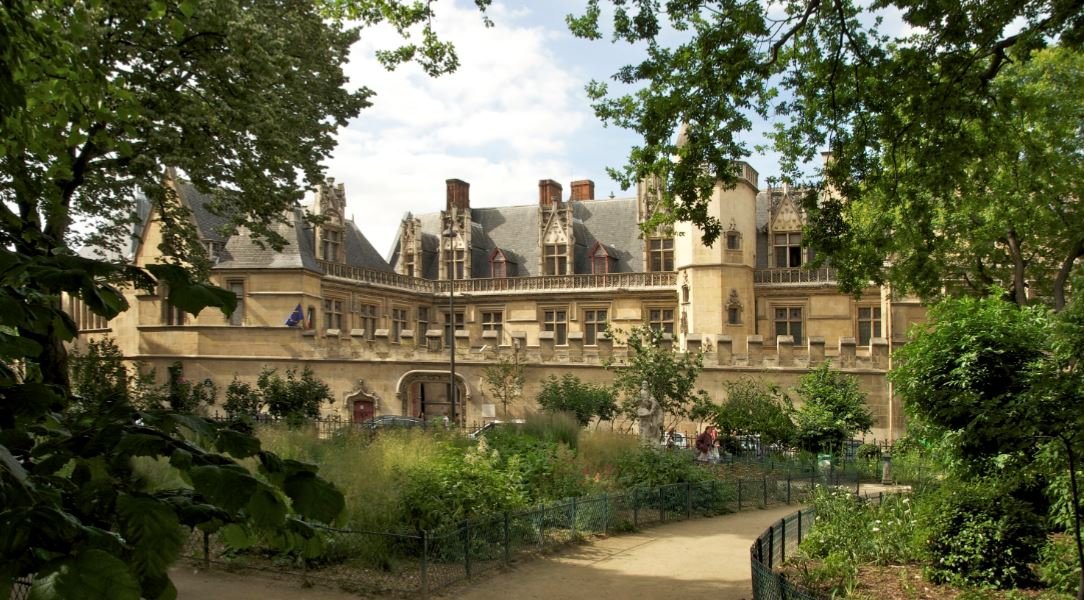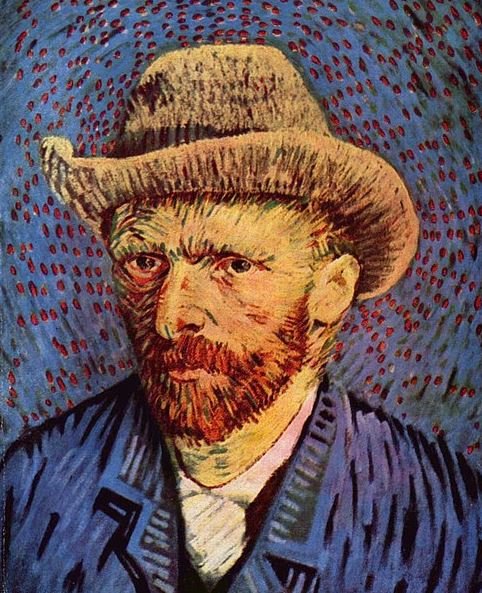Top 19 Art Museums in Paris, France
Whether you're a visitor or a resident of Paris, the capital of France, immersing yourself in its rich art scene is an absolute must.
To help plan your visit, I have put together a comprehensive list of the 19 best art museums in Paris. Each museum promises a unique and captivating experience, showcasing the very best masterpieces and artistic talent. So, if you're planning to embark on an unforgettable art expedition in Paris, my guide will be a valuable resource to help you.
Table of Contents
1. Musée du Louvre
Admission: Adults from €17
Opening Hours: Monday, Wednesday, Thursday, Saturday and Sunday, 9am to 6pm, and Friday 9am to 9.45pm
The Musée du Louvre (The Louvre Museum) is a national art museum in Paris, France. It is the largest museum in France and is one of the largest art museum in the world. It is located on the Right Bank of the Seine River, in the 1st arrondissement.
The Louvre boasts an extraordinary permanent art collection that spans thousands of years. It has over 35,000 artworks on display, ranging from Egyptian antiquities, Renaissance art, and Greek sculptures to modern art. Masterpieces by artists such as Leonardo da Vinci, Rembrandt, Johannes Vermeer, and Peter Paul Rubens are on display. It is also home to some of the most canonical works of Western art, including the Mona Lisa by Leonardo da Vinci and the Venus de Milo by Alexandros.
Besides the Mona Lisa and Venus de Milo, some other popular exhibits at the Louvre include the Winged Victory of Samothrace, the Code of Hammurabi, the Coronation of Napoleon, the Raft of the Medusa, the Great Sphinx of Tanis, and the Seated Scribe.
The architecture of the Louvre itself is a fascinating blend of medieval fortress, Renaissance palace, and modern design. The iconic glass pyramid, designed by architect I.M. Pei, serves as the main entrance, juxtaposing modernity against the historic backdrop of the museum.
2. Centre Pompidou
Admission: Adults from €15
Opening Hours: Monday to Friday: 12noon - 10pm; Saturdays, Sundays: 10am - 10pm. NB Centre Pompidou is scheduled to close in 2025 for a few years, for renovation works.
The Centre Pompidou is a complex building in the Beaubourg area of the 4th arrondissement of Paris. It is also known as the Centre national d'art et de culture Georges-Pompidou and is a national art museum.
The Centre Pompidou is home to the National Museum of Modern Art (musée national d’art moderne), which has the biggest collection of modern and contemporary art in Europe and offers a unique and immersive experience for its visitors.
This museum has a diverse range of exhibitions on display. From contemporary art to photography, cinema and design, the Centre Pompidou hosts a dynamic program that pushes the boundaries of creativity. It's a place where art is constantly evolving.
One of the crown jewels of the Centre Pompidou is its permanent art collection, showcasing renowned works by iconic artists. Whether you're a fan of surrealism, cubism, or pop art, this collection has something to ignite your artistic soul.
The Centre Pompidou is home to a huge collection of artworks by some of the most famous modern artists, including collections by Wassily Kandinsky, Robert Delaunay, Otto Dix, Frida Kahlo, Marc Chagall, Piet Mondrian, Marcel Duchamp, Yves Klein, Pablo Picasso, and Henri Matisse.
The Centre Pompidou's architectural design, a collaboration between Renzo Piano and Richard Rogers, is a bold departure from traditional museum structures. With its exposed pipes, colourful façade, and an innovative inside-out design, it's a testament to the forward-thinking vision of its creators. The transparent escalators, placed on the exterior, offer panoramic views of the city as you ascend to different floors.
As you explore the various levels of the Centre Pompidou, you will encounter bustling galleries, cafés, and a stunning rooftop terrace that provides breathtaking vistas of Paris.
The Centre Pompidou is a must-visit destination. Here you can lose yourself in its captivating exhibitions, marvel at its architectural splendour, and immerse yourself in the rich tapestry of modern and contemporary art.
3. Musée d'Orsay
Admission: Adults from €16, and free for 18 year olds and younger
Opening Hours: Tuesday to Sunday, 9.30am to 6pm, with extended hours on Thursdays until 9.45pm.
Address: Musée d'Orsay, 1 Rue de la Légion d'Honneur, 75007 Paris, France
The Musée d'Orsay in Paris, is located on the Left Bank of the Seine and is housed in the former Gare d'Orsay, a Beaux-Arts railway station.
This art museum is internationally renowned for its rich collection of Impressionist art and specialises in displaying artistic creations from 1848 to 1914.
Visitors can see works of art by famous artists such as Vincent van Gogh, Claude Monet, and Edgar Degas. This museum is a must-visit for art lovers and anyone interested in Impressionist and post-Impressionist art. In addition to paintings, the museum also has impressive collections of sculptures, photographs, drawings, manuscripts, books, and architectural drawings.
4. Château de Versailles
Admission: Adults from €19.50
Opening Hours: Open from 9am to 6pm
Address: Palace of Versailles, Place d'Armes, 78000 Versailles, France
The Château de Versailles (Palace of Versailles), located in Versailles, on the outskirts of Paris. The Palace of Versailles, built in the 17th century, was originally a hunting lodge for King Louis XIII. His son, Louis XIV, transformed it into a grand palace, symbolising absolute monarchy. The Palace of Versailles is renowned for its opulent architecture, expansive gardens, and rich history.
In addition to its grandeur, the palace also houses an impressive collection of art. Here are some notable art collections at the Palace of Versailles:
The Hall of Mirrors: One of the most famous rooms in the palace, the Hall of Mirrors features 17 large mirrored arches, which reflect the adjoining windows overlooking the gardens. The hall is decorated with magnificent paintings on the ceiling, depicting various significant events in French history.
The King's Grand Apartments: These apartments were the private chambers of the French kings and queens. They are adorned with exquisite paintings, sculptures, and furniture. Each room has its own theme, such as the Apollo Room, the Venus Room, and the Mars Room, each dedicated to a different mythological figure.
The Queen's Apartments: Similar to the King's Grand Apartments, the Queen's Apartments are lavishly decorated and feature beautiful artwork. The Queen's Bedchamber is particularly notable for its intricate decor and magnificent furniture.
The Gallery of Great Battles: This gallery is dedicated to portraying France's military victories. It spans over 120 metres and contains 33 paintings depicting significant battles and military campaigns of France.
The Museum of the History of France: Located in the south wing of the Palace, this museum showcases a collection of paintings, sculptures, and artifacts that chronicle the history of France from ancient times to the French Revolution.
The palace is home to numerous other rooms, corridors, and galleries that display art pieces from various periods, providing visitors with a rich cultural experience.
5. Petit Palais
Admission: Adults from €13
Opening Hours: Tuesday to Sunday, 10am to 6pm
Address: Petit Palais, Av. Winston Churchill, 75008 Paris, France
Petit Palais is nestled in the 8th arrondissement, close to the bustling Champs-Élysées.
The Petit Palais hosts a diverse array of exhibitions, showcasing everything from ancient artifacts to contemporary art. From paintings to sculptures, decorative arts to photography, the museum’s program spans the artistic spectrum, offering something to captivate every visitor.
Some notable works of art housed in the Petit Palais include Rembrandt's Self-Portrait in Oriental Costume, Jean-Auguste-Dominique Ingres' Death of Leonardo, Georges Clairin's Sarah Bernhardt in the Role of Hamlet, and Gustave Courbet's Portrait of Juliette Courbet and Self Portrait with Black Dog. The museum’s collection of 19th-century paintings, sculptures, and art objects evoke the highlights of art in France, from the Restoration to the Third Republic.
The Petit Palais, sometimes referred to as the Musée des Beaux-Arts, is itself is a grand building that seamlessly blends classical and Beaux-Arts styles, with its ornate façade and beautifully landscaped courtyard.
As you wander through the museum’s halls, you'll be in awe of the exquisite details of the interior architecture. The high ceilings, intricate moldings, and graceful archways create a harmonious backdrop for the art on display.
6. Musée Picasso
CC Image courtesy of Lamblukas, Flickr
Admission: Adults from €11
Opening Hours: Tuesday to Friday, 10.30am to 6pm, and Saturdays and Sundays from 9.30am to 6pm.
Address: Musée Picasso, 5 Rue de Thorigny, 75003 Paris, France
The Musée Picasso (Picasso Museum) in Paris, officially known as the Musée National Picasso-Paris, is dedicated to the renowned Spanish artist Pablo Picasso. This museum is located in the historic Marais district of Paris, in the Hôtel Salé, a 17th-century mansion.
The museum houses an extensive collection of Picasso’s works, showcasing his artistic evolution throughout his career. The collection includes paintings, sculptures, drawings, ceramics, prints, and photographs, offering a comprehensive overview of Picasso's diverse artistic styles and techniques.
Visitors to the museum can explore Picasso’s masterpieces, including iconic works such as “Le Matador”, “Le Baiser”, and “Homme a la Guitare”. The collection spans various periods, including his Blue Period, Rose Period, Cubist works, and later abstract and surrealist creations.
In addition to Picasso’s artworks, the museum also displays a selection of pieces from his personal collection, featuring works by other renowned artists such as Henri Matisse, Joan Miró, and Georges Braque. These artworks provide an insight into Picasso’s artistic influences and relationships with his contemporaries.
7. Musée de L’Orangerie
CC Image courtesy of Brady Brenot, Wiki Commons
Admission: Adults from €10, and 18 year olds and younger go free
Opening Hours: Wednesday to Sunday, 9am to 6pm
Address: Musée de l'Orangerie, Jardin des Tuileries, 75001 Paris, France
The Musée de l'Orangerie is an art gallery of impressionist and post-impressionist paintings located in the west corner of the Tuileries Garden next to the Place de la Concorde in Paris.
It is most famous as the permanent home of eight large Water Lilies murals and The Four Seasons, by Claude Monet. The museum also features other works of impressionist and post-impressionist painters, including The Walter-Guillaume Collection, as well as large-scale paintings by André Derain.
8. Musée Marmottan Monet
Admission: Adults from €14
Opening Hours: Wednesday to Sunday, 9am to 6pm
Address: Musée Marmottan Monet, 2 Rue Louis Boilly, 75016 Paris, France
The Musée Marmottan Monet is an art museum located in the 16th arrondissement of Paris, France. It is dedicated to the work of Claude Monet and houses the largest collection of his paintings in the world.
The museum is situated in a beautiful mansion that was once the property of Paul Marmottan, a collector of art and furniture. It was later bequeathed to the Académie des Beaux-Arts and transformed into a museum.
The collection features over three hundred Impressionist and Post-Impressionist paintings by Claude Monet, including his 1872 painting, Sunrise. It also includes rare watercolors, pastels, and engravings.
The museum's collection includes works from other artists such as Berthe Morisot, Edgar Degas, Édouard Manet, and Pierre-Auguste Renoir.
9. The Musée Guimet
CC Image courtesy of dalbera, Wiki Commons
Admission: Adults from €11.50
Opening Hours: Monday, Wednesday to Sunday from 10am to 11.30am and from 2.30pm to 5.30pm.
Address: Musée national des arts asiatiques Guimet, 6 Pl. d'Iéna, 75116 Paris, France
The Musée Guimet, also known as the Musée national des arts asiatiques Guimet (National Museum of Asian Arts Guimet), is a museum located in Paris, France. It is dedicated to the art and culture of Asia, with a particular focus on the civilisations of East Asia, South Asia, and Southeast Asia.
The museum was founded by Émile Étienne Guimet, a French industrialist and traveler, in 1889. Guimet had a passion for collecting art and artifacts during his travels to Asia and wanted to share his collection with the public. The museum’s initial collection consisted of over 50,000 objects, including sculptures, paintings, ceramics, textiles, and religious artifacts.
The Musée Guimet houses one of the largest collections of Asian art in Europe. Its collection spans thousands of years of history and encompasses a wide range of artistic styles and mediums. Visitors can explore artworks and artifacts from countries such as China, Japan, India, Cambodia, Thailand, and many others.
The museum’s permanent collection includes notable masterpieces, such as ancient Chinese bronzes, Japanese woodblock prints, Indian sculptures, and Buddhist art from various Asian countries.
10. Musée du Quai Branly - Jacques Chirac
CC Image courtesy of Chad and Steph, Flickr
Admission: Adults from €12
Opening Hours: Tuesday, Wednesday, Friday, Saturday, Sunday from 10.30am to 7pm, Thursday from 10.30am to 10pm
Address: Musée du Quai Branly - Jacques Chirac, 37 Quai Jacques Chirac, 75007 Paris, France
The Musée du Quai Branly - Jacques Chirac, commonly known as the Quai Branly Museum is located near the Eiffel Tower, along the Quai Branly.
This art museum is dedicated to the indigenous art, cultures, and civilisations of Africa, Asia, Middle East, Oceania, and the Americas. Visitors can explore diverse exhibits, including ceremonial masks from West Africa, intricate textiles from Southeast Asia, wooden sculptures from the Americas, and intricate carvings from the Pacific Islands.
The Musée du Quai Branly aims to showcase the cultural diversity and richness of non-European countries. It presents both traditional and contemporary works, exploring themes such as rituals, beliefs, and artistic expressions from various indigenous cultures.
11. Musée Rodin
Admission: Adults from €13
Opening Hours: Tuesday to Sunday from 10 a.m. to 6:30 p.m
Address: Musée Rodin, 77 Rue de Varenne, 75007 Paris, France
The Musée Rodin (Rodin Museum) is a museum primarily dedicated to the works of the French sculptor Auguste Rodin. It has two sites: the Hôtel Biron and surrounding grounds in central Paris, as well as just outside Paris at Rodin’s former home.
The Musée Rodin exhibits an exceptional collection of sculptures, in particular the iconic works of Rodin himself, such as “The Thinker” and “The Kiss”. The delicate play of light and shadow on the textured surfaces brings the sculptures to life, showcasing the artist’s incredible skill in capturing the human form with depth and emotion. Many of his sculptures are displayed in the museum’s extensive garden.
12. Musée du Luxembourg
CC Image courtesy of 4net, Wiki Commons
Admission: Adults from €14, and free for under 14s.
Opening Hours: Monday to Sunday from 10.30am to 7pm, open late on Monday until 10pm
Address: Musée du Luxembourg, 19 Rue de Vaugirard, 75006 Paris, France
The Musée du Luxembourg is an art museum located in the 6th arrondissement of Paris, France. It is situated in the beautiful Luxembourg Gardens, near the Luxembourg Palace.
The museum has a rich history, as it was the first public art museum in France, established in 1750. Initially, it housed the royal collection and served as a venue for temporary exhibitions. Today, it continues its tradition of showcasing a diverse range of art exhibitions. There is no longer a permanent collection at the Museum, but hosts two annual temporary exhibitions. For example, in 2023, the Musée du Luxembourg presents a new exhibition dedicated to Léon Monet (1836-1917) , the forgotten brother of Claude (1840-1926). The Museum is closed outside of the temporary exhibitions.
13. Musée Jacquemart-André
CC Image courtesy of Lomita, Wiki Commons
Admission: Adults from €17
Opening Hours: Monday to Friday from 11.45am to 6pm, Saturday, 11am to 6pm and Sunday 11am to 2.30pm
Address: Musée Jacquemart-André, 158 Bd Haussmann, 75008 Paris, France
The Musée Jacquemart-André is an art museum located in Paris, France. It is housed in a stunning mansion that was once the private residence of Édouard André and his wife Nélie Jacquemart. The couple, who were passionate art collectors, transformed their home into a museum to display their extensive collection.
The Jacquemart-André collection includes various paintings by renowned artists such as Canaletto, François Boucher, Jean-Marc Nattier, Jean Simeon Chardin, and more. The collection also features sculptures, tapestries, and other art objects from different periods. The museum has different rooms dedicated to specific themes, such as the Library, Boudoir, Salon de Musique, Venetian room, Florentine room, and more.
The mansion itself is a beautiful place, with beautifully decorated rooms, grand staircases, and an elegant courtyard. It offers a glimpse into the luxurious lifestyle of the wealthy Parisian elite during the 19th century.
14. Musée Carnavalet
CC Image courtesy of Miguel Hermoso Cuesta, Wiki Commons
Admission: Adults from €6
Opening Hours: Monday to Sunday from 10.30am to 7pm, open late on Monday until 10pm
Address: Musée Carnavalet, 23 Rue de Sévigné, 75003 Paris, France
The Musée Carnavalet is a museum located in the Marais district of Paris, France and is dedicated to the history of the city of Paris, from its origins to the present day.
The museum is housed in two historic mansions, the Hôtel Carnavalet and the Hôtel Le Peletier de Saint-Fargeau, which date back to the 16th and 17th centuries. The museum building itself showcases the beauty of French Renaissance and classical architecture.
The Musée Carnavalet displays a vast collection of artifacts, artworks, and documents that trace the history of Paris. The exhibits cover a wide range of topics, including the city’s urban development, political events, social life, art, and cultural heritage. Among the notable highlights of the Musée Carnavalet are the reconstructed interiors of Parisian houses and shops from different periods, offering a glimpse into the daily life of Parisians throughout history. The museum also houses significant artworks, such as paintings by Nicolas Poussin, Jean-Baptiste Siméon Chardin, and Eugène Delacroix.
15. Musée des Arts Décoratifs
CC Image courtesy of THOR, Wiki Commons
Admission: Adults from €14
Opening Hours: Tuesday to Sunday from 11am to 6pm
Address: Musée des Arts Décoratifs, 107 Rue de Rivoli, 75001 Paris, France
The Musée des Arts Décoratifs (Museum of Decorative Arts) is a museum located in the Palais du Louvre in Paris. It is dedicated to the decorative arts, showcasing a wide range of objects that illustrate different styles, techniques, and periods of decorative arts and design.
The museum’s collection spans various disciplines, including furniture, ceramics, glassware, textiles, jewellery, fashion, graphic design, and advertising. It features objects from different historical periods, from the Middle Ages to the present day, providing insights into the evolution of decorative arts and design over time.
Visitors to the Musée des Arts Décoratifs can explore a diverse array of exhibits, ranging from elaborate Louis XIV furniture to Art Nouveau glassware, from Art Deco fashion to contemporary design pieces.
16. Musée Nissim de Camondo
Admission: Adults from €12
Opening Hours: Wednesday to Sunday from 10am to 5.30pm
Address: Musée Nissim de Camondo, 63 Rue de Monceau, 75008 Paris, France
The Musée Nissim de Camondo is situated in the 8th arrondissement, near Parc Monceau. The museum is housed in the former residence of Moïse de Camondo, a prominent member of the wealthy Camondo family.
The Musée Nissim de Camondo is dedicated to the art and lifestyle of the Belle Époque period in Paris. It showcases the exquisite collection of decorative arts assembled by Moïse de Camondo, featuring furniture, paintings, sculptures, textiles, and other objects.
The museum’s collection reflects the refined tastes of the Camondo family and their passion for French decorative arts. The museum’s layout recreates the ambiance of an elegant Parisian townhouse, allowing visitors to experience the grandeur and refinement of the Belle Époque era. It showcases the family’s private living spaces, including reception rooms, a dining room, a music room, and a library.
The museum also tells the story of the family’s tragic fate during World War II, as they were of Jewish heritage. It serves as a poignant reminder of the impact of historical events on individuals and communities.
17. Musée Cognacq-Jay
Admission: Free
Opening Hours: Tuesday to Sunday from 10 a.m. to 6 p.m
Address: Musée Cognacq-Jay, 8 Rue Elzevir, 75003 Paris, France
The Musée Cognacq-Jay is a museum located in the Marais district, in the Hôtel de Donon, an 18th-century building. The museum is dedicated to the private collection of Ernest Cognacq and his wife, Marie-Louise Jay. Ernest Cognacq was the founder of La Samaritaine, a major Parisian department store.
The museum houses a collection of artworks primarily from the 18th century, including paintings, sculptures, furniture, and decorative objects. The collection is presented in an elegant setting, recreating the atmosphere of Parisian salons of the time. Visitors can admire works by renowned artists such as François Boucher, Jean-Baptiste-Siméon Chardin, and Jean-Honoré Fragonard.
18. Musée de Cluny
Admission: Adults from €12
Opening Hours: Tuesday to Sunday from 9.30am to 6.15pm
Address: Musée de Cluny, 28 Rue du Sommerard, 75005 Paris, France
The Musée de Cluny, also known as the Cluny Museum, is housed in the Hôtel de Cluny, a medieval building dating back to the 15th century.
The Musée de Cluny is renowned for its collection of medieval artifacts and works of art. One of its most famous pieces is the Lady and the Unicorn tapestry series, which is considered a masterpiece of medieval art. The museum also houses sculptures, illuminated manuscripts, stained glass windows, and other objects from the Middle Ages.
The Hôtel de Cluny itself is of architectural significance, with its Gothic and Renaissance elements and beautiful gardens. The building is positioned on the ruins of ancient Roman baths located on the site.
19. Grand Palais
Admission: Full price adults are €16
Opening Hours: Monday from 12am to 7.30pm, Wednesday to Sunday from 10am to 7.30pm, Closed on Tuesdays
Address: Grand Palais, 3 Av. du Général Eisenhower, 75008 Paris, France
The magnificent Grand Palais is located in the 8th arrondissement, on the iconic Avenue des Champs-Élysées.
The Grand Palais is a historic exhibition hall and cultural complex. The Grand Palais was constructed for the Exposition Universelle (World’s Fair) held in Paris in 1900 and has since become an iconic landmark of the city.
The Grand Palais consists of several distinct areas. The main exhibition hall, known as the Nave, is an enormous glass and iron structure that spans 240 metres in length. It is often used for large-scale exhibitions and cultural events. The Nave’s glass roof allows natural light to flood the space, creating a unique atmosphere.
The Palais de la Découverte, a science museum, is located within the Grand Palais complex. It offers interactive exhibits and educational programs, focusing on scientific disciplines such as physics, chemistry, astronomy, and biology.
In recent years, the Grand Palais has also been used as a venue for temporary art exhibitions, showcasing works by renowned artists from various periods and styles. It has hosted major contemporary art shows, and fashion events. Some of the past exhibitions held at the Grand Palais include Giovanni Boldini, Ilya Repin, Henri de Toulouse-Lautrec, and El Greco.
I have included opening times for each museum that are correct at the time of writing this article, but please check the latest information before your visit.
I hope you have found my list of art museums in Paris, France useful. If you have visited any of these places, I would love to hear your thoughts or if you feel one of your favourites is missing from the list, please email me and let me know at sarahransomeart@gmail.com.

